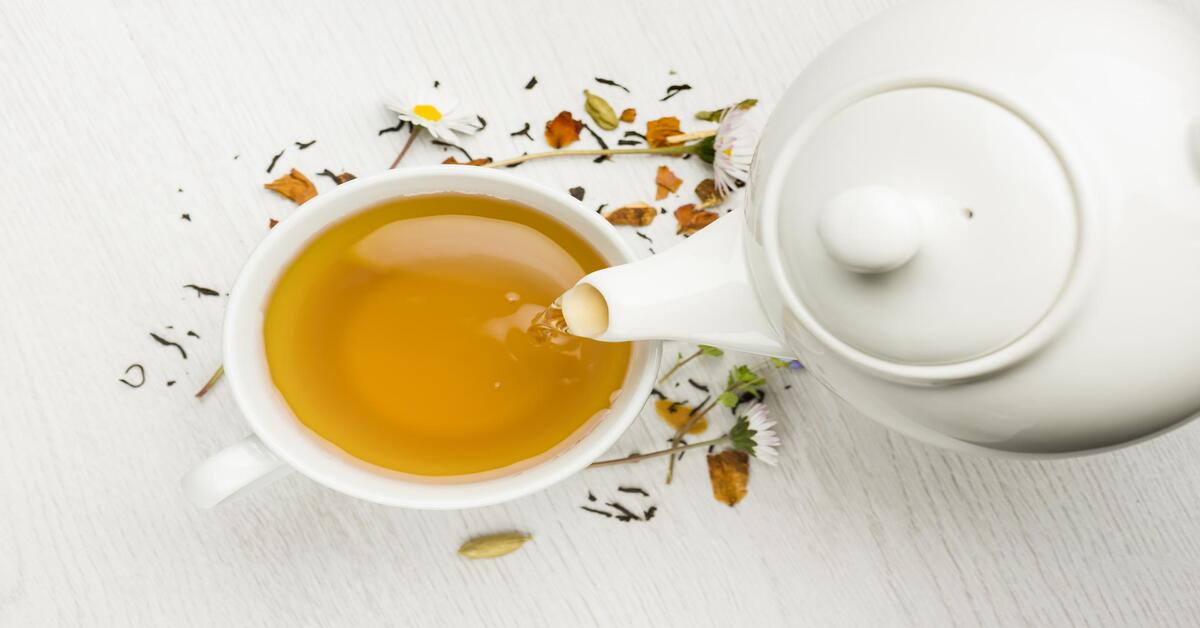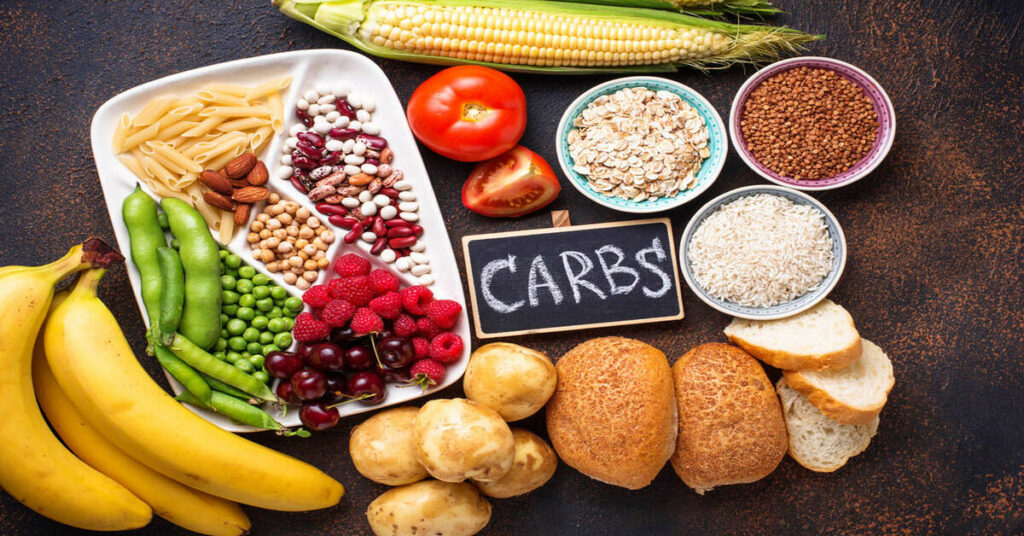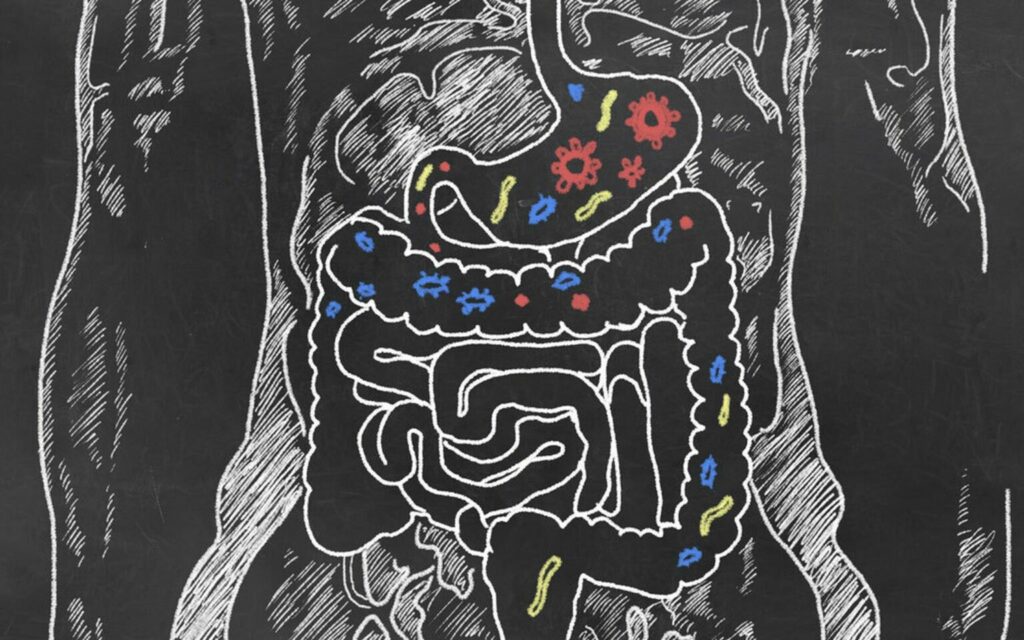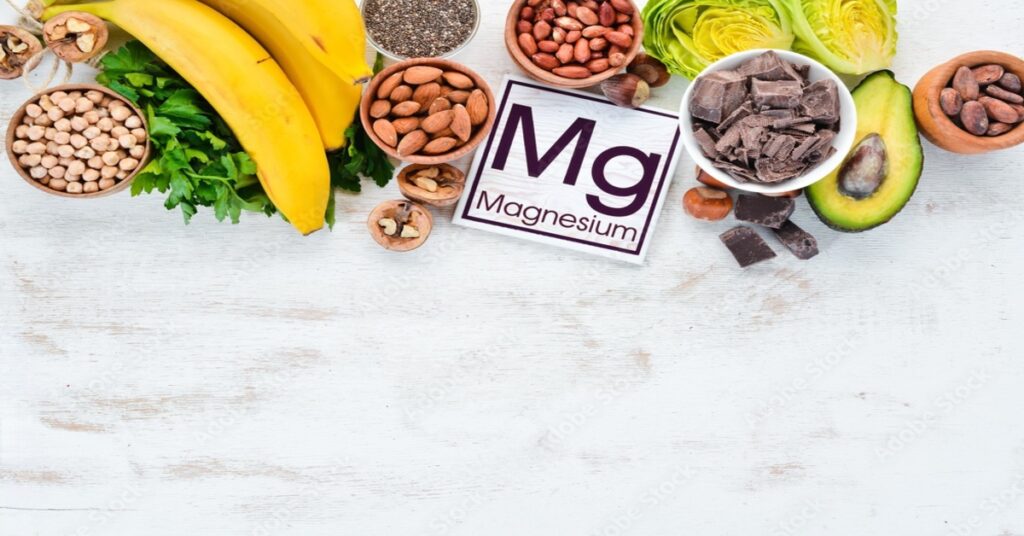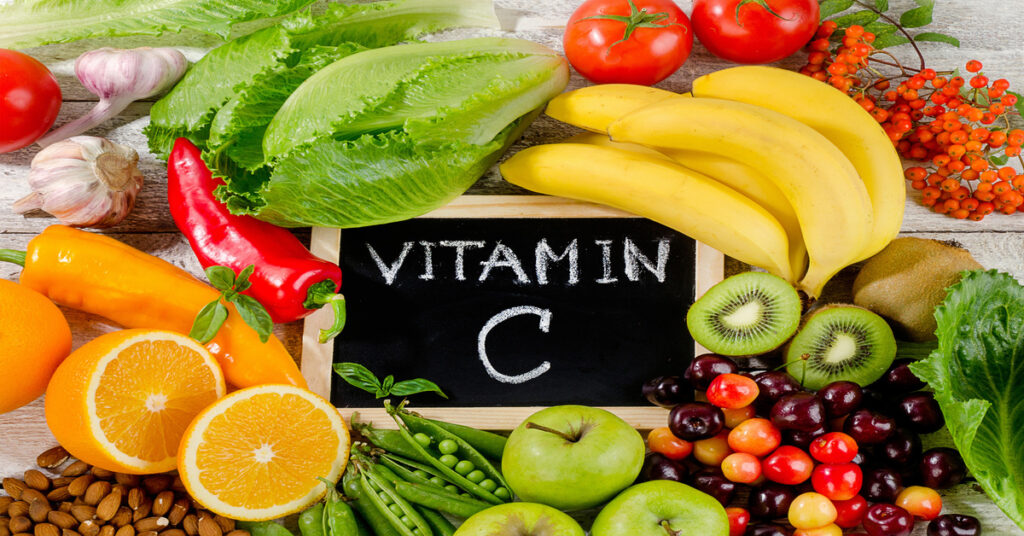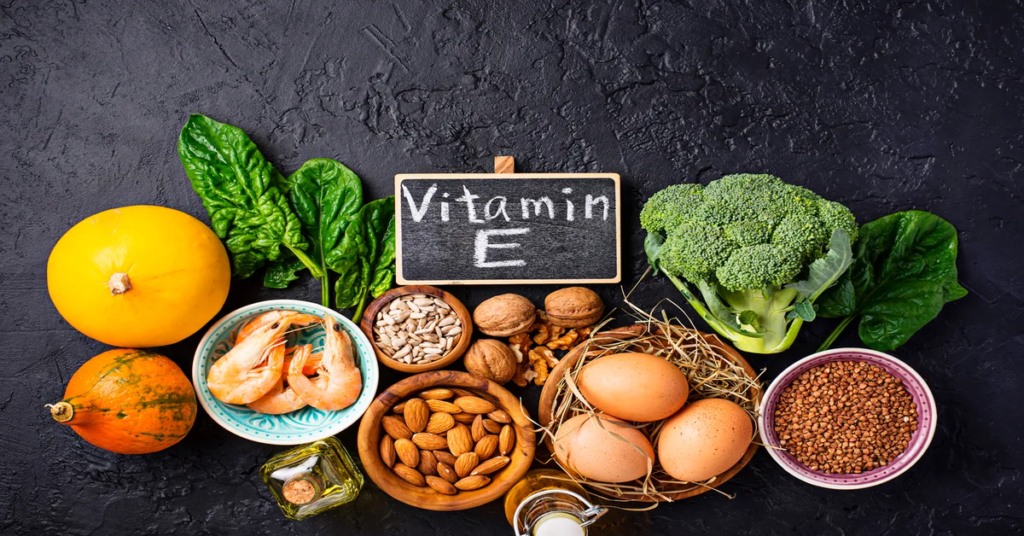GREEN TEA EXTRACT
In recent years, green tea extract has emerged as a popular dietary supplement due to its potential health benefits. It contains a variety of phytochemicals, including catechins such as epigallocatechin gallate (EGCG) and caffeine. These compounds have been extensively studied for their ability to improve various health indices, such as body composition and metabolic health.
What is particularly intriguing is the synergistic effect that EGCG and caffeine have on these health outcomes, which has led to a growing interest in using green tea extract as a supplement for weight loss and overall wellness. In this article, we will delve into the scientific research behind green tea extract and its potential benefits for human health.
We will also explore the various forms of green tea extract available, as well as the recommended dosage and potential side effects. By the end of this article, you will have a comprehensive understanding of the potential benefits and risks associated with green tea extract supplementation and how it may fit into your life.
Table of Contents
- Sources & Composition
- Molecular Targets
- Absorption
- Elimination
- Learning & Memory
- Interactions with Cardiovascular Health
- Interactions with Glucose Metabolism
- Obesity & Fat Mass
- Skeletal Muscle & Physical Performance
- Bone & Joint Health
- Inflammation & Immunology
- Interactions with Hormones
- Interactions with Oxidation
- Peripheral Organ Systems
- Interactions with Cancer Metabolism
- Longevity & Life Extension
- Interactions with The Skin
- Nutrient Interactions
- Safety & Toxicology
Sources & Composition
Approximately 30% of the weight of green tea leaves is made up of flavonols and flavanols, which are classified as catechins. Catechins can be further categorized into four main types: epigallocatechin-3-gallate (EGCG), epi-gallocatechin (EGC), epicatechin gallate (ECG), and epicatechin (EC). Although all catechins share similar properties, EGCG is considered the most potent in many respects. While these four catechins are the primary ones present, there may also be other isomers or conjugates that contain either catechin or epicatechin as a base, with varying levels of gallic acids.
The primary sources of green tea catechins, which consist mainly of the four previously mentioned types, are as follows:
- Tea, which is made from the leaves of the Camellia Sinensis plant, can be used to prepare different types of teas such as White, Green, Oolong, and Black tea.
- Chungtaejeon Tea, a type of fermented tea from Korea, contains lower levels of catechins but possesses a higher antioxidant potential.
Green tea contains five different catechins. The parent compound exists in two forms: catechin, which is the trans isomer, and epicatechin, which is the cis isomer. Epicatechin also has a hydroxyl group and is called epigallocatechin. Both epicatechin and epigallocatechin can combine with Gallic Acid to form gallates. In this article, all five catechins will be referred to as “Green Tea Catechins.”
The gallic acid moieties present in EGCG and ECG, which are located on the lower right-hand side of the chemical structure image provided, impart unique properties not observed in the other three molecules (EGC, EC, and C). This is because the gallic acid moiety may contribute to the overall structure-function relationship of these catechins.
LGNC-07, a combination of green tea catechins and L-theanine, has been studied for its potential to enhance memory. One study on individuals with non-clinical memory decline (with an average age of 58) found that LGNC-07 had some effectiveness, particularly in improving recognition speed, word reading, and selective attention. LGNC-07 is formulated with a 6:1 ratio of green tea catechins to theanine, providing 360mg of catechins and 60mg of theanine per 430mg capsule.
Animal models suggest that the mechanism of action for LGNC-07 may be through acetylcholinesterase inhibition. Additionally, this combination was found to be more effective at mitigating toxin-induced memory loss compared to either compound used alone.
Molecular Targets
Catechol-O-Methyltransferase (COMT) is an enzyme that is able to methylate and (usually) inactivate a few compounds, including green tea catechins and adrenaline/dopamine (monoamines) and L-DOPA.
Research suggests that all four of the green tea catechins can be methylated in the presence of incubated COMT, indicating that they are substrates for this enzyme. [1, 2]
Catechins also appear to inhibit COMT as well as act as substrate for it. Some theories suggest that EGCG’s inhibition of COMT could underlie the fat-burning effects of green tea by increasing adrenaline levels. This is based on the observation that individuals with a low-active COMT genotype tend to have higher serum adrenaline levels during rest and exercise.
While the overall results of a study on the vascular effects of green tea were not significant, it did find significant results in the subset of individuals with a low-active COMT genotype. This study observed a decrease in blood pressure specifically in the low-active genotype. Another study suggested that this may be due to favorable pharmacokinetics, such as less excretion in urine, allowing for more time to affect the body.
However, a study found that consuming a high dose of catechins (1200mg) for one week did not significantly affect adrenaline levels compared to a placebo during rest or low-intensity exercise.
Inhibition of NADPH oxidase can lead to both anti-inflammatory and antioxidative effects that are not related to the direct scavenging of free radicals by the catechins.
Studies have found that EGCG has an association with the 67-kDa Laminin Receptor, a receptor that is highly expressed on certain cancer cells and is linked to the risk of tumor invasion and metastasis. [1]
Absorption
The absorption of green tea catechins by the intestine (bioavailability) is limited, with human studies reporting a range of 1.68%, while in rats, the bioavailability is similar. [1] However, in mice, the bioavailability has been found to be as high as 13-26.5%.
The limited absorption of green tea catechins can be attributed in part to their physical structure, which involves hydroxylated polyphenols that form a large hydration shell. As a result, their absorption occurs mainly through passive diffusion between intestinal cells, rather than active transport mechanisms.
The absorption of catechins is enhanced when consumed on an empty stomach, as observed in studies using pure EGCG and a decaffeinated green tea extract that contains several catechins.
Main Takeaway: Poor absorption of green tea catechins, particularly EGCG, in the intestines is mainly due to the lack of transporters that facilitate their uptake from the gut into the body. Absorption may be enhanced on an empty stomach. Piperine may potentially increase absorption, but further studies are needed in rats or humans, as mice used in previous studies may show differences in interspecies absorption.
Green Tea Catechins, particularly EGCG, have been found to inhibit the activity of intestinal sulfurotransferase enzymes, which are involved in the metabolism of various supplements and drugs. This inhibitory effect is also seen with other flavonoids, such as quercetin, found in green tea.
Furthermore, the inhibitory effect on this enzyme may also extend to the colon and potentially exert anti-carcinogenic effects on colonic tumor cells by blocking the metabolism of certain procarcinogens.
Studies investigating the effect of EGCG on circulating levels of the compound have shown high inter-individual variability, but suggest a dose-dependent increase. [1, 2] A tipping point appears to occur at approximately 800mg, beyond which the amount in the blood increases more dramatically. However, it should be noted that very high levels of EGCG in the blood have been associated with nausea.
Elimination
Epicatechin (EC) and Epigallocatechin (EGC), two of the green tea catechins, are eliminated from the body in the urine, as their serum conjugates are soluble in water. In contrast, EGCG is not typically excreted in urine.
Learning & Memory
Green tea might be beneficial for cognition, as when high doses (15mg/kg bodyweight) of EGCG where intravenously administrated in rats 60 minutes prior to a learning event (passive avoidance test) resulted in statistically significant improvements. In aged rats, lower dosages of green tea catechins (0.5% of feed) fed orally for 8 weeks improved memory. These findings were also observed with injections of 10-20mg/kg, resulting in an improvement in spatial memory.
In vitro, studies have demonstrated that the proliferation of adult neural progenitor cells (NPCs) can be enhanced by concentrations of EGCG ranging from 5-40uM. However, differentiation was not induced at these concentrations, and higher concentrations (80uM) actually inhibited differentiation while still increasing proliferation. These findings were also observed in vivo, where injections of 10-20mg/kg of EGCG in aged subjects resulted in enhanced NPC proliferation.
A study on people without any health conditions revealed that a single intake of 270mg of EGCG did not have a significant impact, either positive or negative, on their mood.
Studies conducted in vitro have demonstrated that the primary catechin (EGCG) can counteract the negative modulation of GABA(A) receptors. In vivo studies on rats have shown that EGCG reduced anxiety in a dose-dependent manner. However, the significant reduction in anxiety was observed at a dose of 30mg/kg body weight.
L-Theanine has the ability to enhance the anxiolytic effects, and although it does not have anxiolytic properties on its own, [1] it has been observed to reduce anxiety when combined with Midozolam. Given that EGCG also possesses anxiolytic properties, it is possible that the combination of L-Theanine and EGCG could work synergistically to reduce anxiety.
A study conducted on mice to evaluate the effects of green tea on chronic fatigue syndrome demonstrated that administering green tea at 25-100mg/kg body weight before forced swim tests helped to maintain physical performance during fatigue. Moreover, it normalized some brain biomarkers, such as TNF-a and glutathione, that are altered due to chronic stress. Weight loss and hypertrophy of the spleen and thymus, which are associated with chronic fatigue, were also reduced with 50 and 100mg/kg body weight doses of green tea.
Interactions with Cardiovascular Health
High consumption of green tea catechins has been shown to decrease the oxidation of LDL, which is a known factor in atherosclerosis. [1, 2] This effect is thought to occur as catechins bind to LDL particles and directly scavenge radicals in the vicinity.
According to a meta-analysis, consumption of whole green tea has been found to increase endothelium-mediated vasodilation. The study reported that at a median daily dose of 500mL, the arterial diameter increased by 40% compared to the control group or baseline measurement of 6.3%.
One potential mechanism of action for the observed increase in endothelium-mediated vasodilation following green tea consumption could be related to the ability of green tea catechins to enhance Nitric Oxide (NO) bioavailability in vivo.
This effect may be due to the catechins’ ability to increase the production of NO, possibly through Akt-mediated activation of NOS.
A study has reported that adding milk to tea can nullify its cardioprotective effects. However, this study has been criticized for its limited scope, as it only measured the effects of green tea ingestion on one occasion, and only two hours after consumption. [1, 2]
The potent inhibitory effect of green tea catechins on squalene epoxidase, which is the rate-limiting enzyme responsible for the conversion of squalene to cholesterol, has been observed. The effects on squalene epoxidase appear to be from binding to the enzyme through a C3 galloyl group, as galloyl esters appear to have this ability as well. Additionally, the anti-oxidant properties of green tea catechins enable them to scavenge oxygen molecules required for the reaction mediated by squalene epoxidase to occur.
Interactions with Glucose Metabolism
Research on the acute effects of green tea catechins on insulin and glucose levels after a single dose, when taken with carbohydrates, suggests that they may not have significant benefits. [1, 2]
Although there is a possibility that individuals with high fasting insulin levels may benefit from green tea supplementation, the overall evidence suggests that there is not a significant effect on reducing insulin levels. [1, 2]
Human studies examining the effects of green tea supplementation, in various forms, on insulin sensitivity in both non-diabetic and diabetic subjects have not shown significant improvements compared to placebo. [1, 2, 3, 4]
There is evidence to suggest that inhibiting COMT (Catechol-O-methyltransferase) in individuals with the high active variation of this enzyme may actually worsen insulin sensitivity. This could explain why there are varying levels of response to green tea and insulin/insulin sensitivity.
When consumed alongside sucrose, a black tea mixture containing Green Tea Catechins was found to be effective in suppressing the amount of glucose that enters the bloodstream over the next 60-120 minutes, to a mild degree. Both 110 mg and 220 mg doses were similarly effective, and this effect occurred without any apparent changes in insulin release.
Brewed green tea has been observed to have a beneficial effect on nutrient partitioning during carbohydrate metabolism. It has been found to suppress adipocyte GLUT4 translocation while simultaneously stimulating myocyte GLUT4 translocation, indicating a favorable effect on glucose uptake. This effect has not been observed with isolated catechins or EGCG.
Obesity & Fat Mass
Green tea has been shown to have a synergistic effect with other fat-burning compounds, often through inhibiting COMT. This includes endogenously produced adrenaline, meaning that taking green tea alone could potentially enhance adrenaline’s ability to increase metabolic rate. [1, 2, 3]
In vitro studies indicate that incubation with EGCG does not result in significant changes in the secretion of leptin and adiponectin within 48 hours. However, some in vivo studies suggest a correlation between green tea supplementation and changes in leptin levels, [1] although causality has not been established.
The presence of all four catechins in green tea effectively prevents the differentiation of adipocytes and preadipocytes when they are exposed to stimuli that promote differentiation and fat accumulation. [1]
Green tea acts by suppressing various transcription factors involved in adipocyte differentiation, such as PPAR-gamma2, SREBP1c, and C/EBP-alpha. It also reduces levels of the cell cycle regulator Cdk2 and Fox01, thereby preventing adipocyte and preadipocyte differentiation in the presence of pro-differentiation stimuli. [1, 2]
The effects described above are mostly attributed to EGCG, which is the most potent of the catechins. These effects are also observed in preadipocytes, which can be inhibited from differentiating.
Animal studies have shown changes in the aforementioned enzymes, but it appears that these effects are associated with the whole green tea extract rather than isolated EGCG.
Green tea catechins, particularly EGCG, can inhibit the activity of the Fatty Acid Synthase enzyme, which is responsible for de novo lipogenesis. This inhibition is believed to be one of the mechanisms by which green tea catechins exert their anti-cancer effects.
Human studies investigating the effects of green tea on fat oxidation have yielded mixed results. While some studies show no significant differencebetween the control and experimental group, others report significant differences.
However, even in studies with no statistical significance, some individuals have shown clinically relevant results. These inconsistencies may be due to individual differences, such as caffeine tolerance, with lower caffeine tolerance resulting in more effective fat oxidation with green tea catechins. [1]
Long-term studies have shown that green tea catechins can lead to a significant reduction in body weight. One study found that taking 886mg of green tea catechins daily for 90 days resulted in an average weight loss of 1.2kg.
Green tea catechins when combined with exercise have been observed to lead to a higher weight loss of 2.2 kg in obese individuals on an exercise program over a period of 12 weeks, in comparison to the control group which lost only 1 kg.
A recent meta-analysis found that green tea extract was associated with an average weight loss of 1.27 kg over a period of at least 12 weeks. The analysis also revealed that individuals who did not habitually consume caffeine experienced greater weight loss with green tea extract supplementation.
A meta-analysis investigating the specific dosage of green tea found that each cup of green tea catechins (containing 253mg catechins and 30mg caffeine) may result in the burning of approximately 5.7g of body fat.
When consumed together with a meal, green tea does not seem to affect the overall metabolic rate significantly, although there may be a trend towards significance. However, after ingestion of 300mg EGCG, a greater amount of energy is derived from dietary fat as opposed to carbohydrate.
At low doses (270mg), green tea does not appear to increase fat oxidation during exercise, but may inhibit carbohydrate digestion. This inhibition of carbohydrate digestion may indirectly contribute to greater fat oxidation, as the body burns more fat for energy when there is less dietary carbohydrate present. This theory is somewhat backed up by green tea losing its effectiveness as a fat burning agent when on a high protein diet, as there are less carbohydrate (relative to adequate protein diets) to block.
Green tea at higher dosages (945mg) can increase fat oxidation and oxygen consumption during exercise, possibly by inducing systemic reactions.
Skeletal Muscle & Physical Performance
Research investigating the use of green tea to increase the rate of fat oxidation (the proportion of energy derived from fatty acids rather than other sources) has not found a statistically significant effect. [1, 2]
Studies examining the effects of green tea on fat oxidation during fasted exercise have shown promising results. One study in*men who supplemented with green tea for 12 weeks prior to testing (250mg three times a day; 125mg EGCG and 20mg caffeine) and another study in women who took the same dose for one day before training followed by a final dose in the morning before exercise found significant increases in fat oxidation during exercise and for up to 75 minutes post-exercise compared to placebo.
There is evidence suggesting that green tea may have some modest advantages for aerobic capacity in sedentary or lightly active individuals.
Bone & Joint Health
Green tea shows potential as an anti-microbial agent for dental diseases when used in mouthwash or other products applied to the gums. While not too much information is available to assess overall potency, this does appear to be a relevant benefit.
In a cross-sectional study at an osteoporosis outpatient clinic, 632 elderly Japanese women with the habits of alcohol drinking, green tea drinking, and physical activity had significantly higher BMD, and those who smoked had significantly lower BMD than patients without each habit after adjusting for age, BMI, and other variables regarding lifestyle.
In a 12 month study involving postmenopausal women taking either Green Tea Extract (843mg EGCG) or placebo, supplementation failed to significantly influence bone mineral density.
Inflammation & Immunology
Studies conducted on rodents have suggested that EGCG has the ability to enhance the activity of NK cells, [1] possibly through a metabolite (EGC-M5). [1]
In vitro studies have demonstrated that EGCG is capable of inhibiting the NADPH oxidase enzyme in mast cells, leading to a reduction in mast cell degranulation induced by compound 48/80 at concentrations ranging from 10-100 μg/mL.
Most catechins, particularly the gallated forms (even more-so when methylated), have been found to inhibit mast cell degranulation by inhibiting the enzyme NADPH oxidase in vitro. However, this effect appears to be stronger with the gallated forms. It should be noted that while EGCG can reduce granulation of mast cells when intracellular oxidation is low, it may exacerbate it in vitro when oxidation is already high before the introduction of EGCG.
Interactions with Hormones
There is currently no agreement on the effects of green tea on testosterone levels. [1, 2] The impact of green tea on testosterone appears to be dependent on the concentration of the tea and the specific mechanism involved. However, there is limited in vivo evidence to support these claims, with only one study conducted on rats.
Interactions with Oxidation
In a study that removed all flavonoids from the diet, the consumption of 18.6mg of green tea catechins was found to increase the body’s ability to fight against oxidative stress after a meal. However, there was no effect on antioxidant potential when consumed in a fasted state, indicating that the effects of green tea catechins are temporary and can last up to 6 hours.
Reductions in DNA damage have been seen (in rodents) in instances of high oxidation such as high-fat feeding and diabetes.
Peripheral Organ Systems
Long-term consumption of green tea through tea is linked to a lower risk of Hepatocellular Carcinoma (OR=0.44) and shows significant interactions with alcohol intake and other carcinogens when examined retrospectively.
Green tea has been associated with a decreased risk of Hepatocellular Carcinoma, which may be attributed to its ability to mitigate the adverse effects of certain toxins or habits that increase the risk of Hepatocellular Carcinoma, such as oxidative stress and inflammation. Additionally, green tea has been shown to interact with moking, and hepatitis, all of which are risk factors for Hepatocellular Carcinoma.
Large-scale epidemiological studies on the association between green tea and health outcomes have yielded inconsistent results. Some studies have found a beneficial effect of green tea consumption, [1] while others have found no effect. [1] It is possible that the observed effects are small or confounded by other lifestyle factors.
It is possible that green tea can influence the activity of some CYP enzymes (predominately expressed in the liver). [1, 2]
Interactions with Cancer Metabolism
Green tea catechins have been found to have diverse effects on cancer metabolism. These effects include inhibiting telomerase, topoisomerases, tNOX enzymes, [1] selectively inhibiting COX2 enzymes without affecting COX1, inducing and regulating cellular apoptosis, [1] and potentially inhibiting BCL-2 proteins.
A secondary analysis was conducted on the urinary metabolites of women who consumed 400-800mg of Polyphenon E (EGCG). The analysis revealed a decrease in VEGF levels in samples taken at 2, 4, and 6 months, and a reduction in Hepatocyte Growth Factor levels at 2 months only.
An intervention involving the administration of 800mg of Polyphenon-E (Green Tea Catechins) did not show any increase in prostate levels of EGCG. Furthermore, the trend towards improved biochemical markers, which could suggest a reduction in risk, was not significant. There seems to be a benefit, but it is not very strong or potent.
The reason behind the limited potency of green tea catechins may be attributed to pharmacodynamics. Although consuming 3-5 cups of green tea daily increases serum levels of EGCG, approximately half of what reaches the prostate is 4′-methyl-EGCG, which is not as bioactive. In vitro studies conducted on prostate cancer cells have shown that methylation of EGCG reduces its effectiveness in fighting cancer.
On the other hand, the intake of EGCG can have an antagonistic effect on radiotherapy in prostate cells. Radiotherapy functions by inducing oxidation and cell death in cancer cells, whereas EGCG acts as an antioxidant, which inhibits this process.
Longevity & Life Extension
An animal intervention, in which green tea was administered from 4 months of age until death at a dose of 2g/kg food, did not significantly impact the time of death. However, it appeared to lower midlife death rates in females.
In the C57BL/6 strain of mice, green tea catechins have been linked to lifespan increases of up to 6%. [1] However, the maximum lifespan did not change. The administered dose was 80mg/L catechins in the drinking water.
Interactions with The Skin
Green tea is believed to be beneficial for treating acne, not only because of its anti-inflammatory properties but also because it is associated with a reduction in sebum production and inhibiting the growth of Propionibacterium acnes bacteria. Both of these factors play a significant role in acne production.
EGCG has been observed to reduce lipid accumulation by 55% at 40μM in SEB-1 sebum cells by suppressing SREBP-1 proteins, which is related to the AMPK pathway. Moreover, the reduction of sebum production has been demonstrated with the topical application of green tea extract in humans.
The inhibitory effect of EGCG on P. acnes appears to increase as the concentration of EGCG increases, as observed in a concentration-dependent manner. Additionally, EGCG seems to decrease P. acnes-induced inflammation by reducing IL-8 production and TLR2 expression in monocytes.
Both green tea solutions and EGCG applied topically have shown consistent benefits in treating acne. [1, 2, 3, 4] Concentrations of 1-5% EGCG do not exhibit significant differences in efficacy, suggesting a possible cap to its benefits. Moreover, 2-3% green tea solutions have been observed to work effectively in a time-dependent manner. On the other hand, the benefits of consuming green tea products and supplements orally are relatively milder and, in some cases, statistically insignificant.
Nutrient Interactions
A collaborative effect has been observed between ascorbic acid (also known as Vitamin C) and EGCG, as well as another component of tea called theflavin, in inhibiting the growth of adenocarcinoma cells.
When the four primary catechins in green tea were coincubated with xylitol (at a concentration range of 11-55µM) and Vitamin C (at a concentration range of 4-20µM), it was observed that Vitamin C had a positive impact on the absorption of catechins that lacked additional galloyl groups (like epicatechin and epigallocatechin), but had no effect on the absorption of gallated catechins. Xylitol, on the other hand, did not exhibit any notable activity in this regard.
BHA, which is commonly used as a food additive and an antioxidant, has been shown to enhance the antimicrobial properties of green tea catechins against Streptococcus mutans, Candida albicans, and Escherichia coli in packaged foods.
Green tea catechins have been shown to improve the effectiveness of caffeine and ephedrine, [1] which are commonly used as fat burners. While caffeine and ephedrine are primarily responsible for fat burning, prolonged use may lead to reduced effectiveness. [1, 2]
Green tea catechins and capsicum vanilloids work synergistically to prevent cancer. In fact, research has shown that a ratio of 25:1 of catechin to vanilloid can increase the ability to kill cancer cells (via the protein tNOX) by 100 times when compared to the effects of green tea alone.
Green tea catechins have been shown to prevent the absorption of dietary sugars in the intestines, mainly due to the ECG component, although the other three catechins also play a role. This is achieved through competitive inhibition of the SGLT-1 transporter responsible for glucose uptake.
Catechins exhibit moderate inhibitory effects on the sucrase enzyme that breaks down sucrose into glucose and fructose. However, theaflavins, which are present in higher concentrations in black tea, are much more potent in inhibiting this enzyme. This suggests that tea as a whole may be more effective in this regard than isolated green tea catechins.
Green tea catechins have been found to inhibit enzymes involved in the digestion of lactose, starch, proteins, and glucose, except for alpha-glucosidase, which is inhibited to a lesser extent. However, the inhibitory effects of these catechins are reduced by 2.6 times when proline-rich foods are consumed alongside them.
An intervention was conducted to test the effects of co-ingesting a combination extract of green, black, and mulberry tea leaves (each at 100 mg) on carbohydrate absorption from a meal mainly consisting of rice with a small amount of fat. The results showed a 25% inhibition in carbohydrate absorption, but this study was limited by the mixture of tea extracts used. In a subsequent study, this confounding factor was addressed by co-ingesting pure green tea extract (4 g extract containing 257.6 mg EGCG) with 50 g corn flakes and 100 mL low-fat milk. This later study demonstrated a reduction of approximately 30% in carbohydrate absorption.
Green tea has been found to reduce the activities of gastric and pancreatic lipase, indicating its potential role as a fat blocker. [1, 2, 3]
These mechanisms to be statistically significant, although their effects in vivo are not particularly potent. There seems to be a maximum inhibition that can be achieved, unlike its dose-dependent effects on reducing cholesterol uptake. [1]
In rats, a dose of 0.5-1% of green tea in their diet led to an increase in the total percentage of dietary fat excreted in feces from 3.5% (control) to 4.6-5.8%.
Research suggests that supplementing with Ubiquinone, a metabolite of CoQ10, may increase the antioxidant potential of EGCG in animals. In addition, it has been found to enhance the liver’s protection against resperpine toxicity when taken with CoQ10.
In colonic tumor cells and human larynx carcinoma cells, curcumin has been found to work in synergy with green tea catechins. Epicatechin (EC), which is one of the four catechins found in green tea, has been shown to enhance the effectiveness of curcumin in cancer cells by increasing its cellular retention time.
Consumption of green tea catechins, especially EGCG, are known to be effective in blocking iron uptake in the body. This effect has been observed in both non-heme iron and heme iron [1] absorption.
However, this effect can be mitigated with the consumption of Vitamin C. The inhibition rate appears to increase with higher doses of EGCG, with rates of around 14% and 27% seen with oral doses of 150mg and 300mg, respectively.
There is no evidence to suggest that green tea inhibits zinc uptake. In fact, green tea may enhance the absorption of zinc in the body.
Green Tea catechins appear to have synergism with Phytic Acid (inositol hexakisphosphate) and in regards to tumor suppression in the colon as a response to toxin injection. The combination of the three (all compounds at 1-2% of the diet) was able to reduce tumor occurrence from 94% (control) to 46% at 1% of feed and 23% at 2% of feed. Additionally, tumors tended to have a reduced average size when the three were combined relative to any combination of two ingredients. Other studies note a significant group interaction between green tea and phytic acid.
These synergistic effects may extend to other tumor cells, such as pancreatic.
In the presence of the other three catechins, the required dose to inhibit cancer cell growth was reduced by 10-fold. Furthermore, various studies have suggested that green tea mixtures may be more potent in preventing cancer than EGCG alone.
Green tea catechins, particularly epicatechin (EC), have been found to exhibit synergistic effects with theaflavins in terms of their antibacterial properties.
Quercetin can enhance the anti-proliferative effect of green tea catechins in prostate cells in a synergistic manner in vitro. Quercetin also increases the bioavailability of green tea polyphenols (catechins) in vivo.
Quercetin has been found to inhibit Multidrug Resistance Proteins, which can export Green Tea Polyphenols from cells. The efflux functions of MRP1 and MRP2 help protect cells from foreign compounds but also limit the time EGCG can remain active within a cell.
Green tea exhibits synergism with several herbs, such as Vitus Vinnifera and Ginkgo Biloba, which are rich in quercetin, a primary polyphenol. This enhances the overall anti-oxidative potential of green tea.
Green tea catechins, in animal models, appear to be synergistic with L-theanine in regards to inhibiting acetylcholinesterase and alleviating cognitive decline.
Safety & Toxicology
In supplemental form, Green Tea Catechins have been found repeatedly safe in consumption at 800mg. [1, 2, 3]
A study reported that a single dose of 1,200mg EGCG was well-tolerated, but it was linked to a higher incidence of nausea compared to the groups that received 800mg and 400mg doses. Single dosages of EGCG can be tolerated up to 1,600mg.
It has been noted that, through beverage consumption, which is my suggested form of intake, that there have been “no reports of clinical toxicity”.
In humans, the maximum tolerated dose is around 4.2g/m2 once daily, or 1.0g/m2 thrice daily. This is a Body Surface Area (BSA) reading that correlates with blood volume, and using the DuBois formula, a male adult who is 5’10 and weighs 150lbs would experience acute toxicity if they consume 7.9g of green tea extract in one dose or 1.9g three times a day. However, it’s important to note that the caffeine content of the supplements (at 7%) may have influenced the results of this study.
Research on animals [1] has suggested that high levels of green tea catechins, especially EGCG, may lead to toxicity, primarily affecting the intestines, stomach, and liver. There is also a possibility that excessive levels in the bloodstream could damage the kidneys. However, it is worth noting that nausea resulting from the use of green tea supplements is not necessarily indicative of stomach damage.
There are a few case studies where doses of green tea supplements ranging from 10-29mg/kg bodyweight (equivalent to 681-1997mg for a 150lb person) have been associated with elevated ALT and bilirubin, indicating liver damage in 8 out of 9 cases. While the authors attributed the cause to the supplements (as the symptoms appeared upon reintroduction), they could not completely rule out the possibility of supplement tampering.

